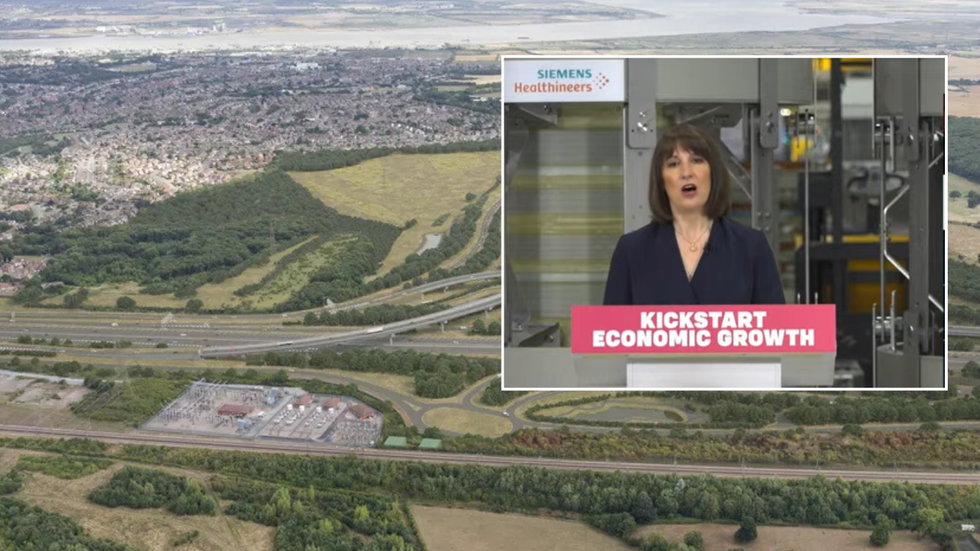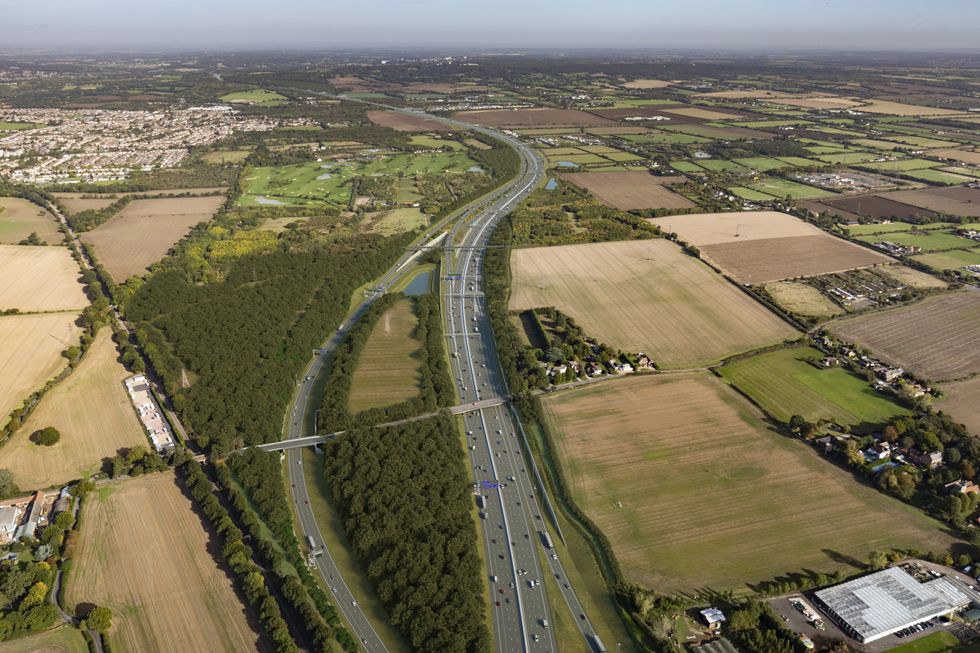A major UK road project has announced ambitious new targets to cut its construction carbon footprint by 70 per cent, marking a first for National Highways.
The groundbreaking commitment follows the Lower Thames Crossing getting greenlit last week after a more than 10-year delay.
Last week Chancellor Rachel Reeves announced the £9billion project last week as part of new measures to grow the economy.
She said the project would be funded through private finances and would offer a crucial road passage for drivers heading to and from Europe.
Do you have a story you’d like to share? Get in touch by emailing[email protected]

The Lower Thames Crossing would connect to the A2 and M2 in Kent
GB/NATIONAL HIGHWAYS
She said: “The Lower Thames Crossing will improve connectivity at Dover, Felixstowe and Harwich alleviating severe congestion for goods destined to export coming from the north and the midlands and across the country to markets overseas.
“To drive growth and to deliver value for money and taxpayers, we are exploring options to privately finance this important project.”
Now the project revealed it will try and significantly reduce its carbon footprint through the use of low-carbon materials and innovative construction methods.
Plans include completely removing diesel from construction sites by 2027, replacing it with electric and hydrogen-powered equipment – a first for a major UK infrastructure project.
The project aims to achieve carbon reductions through several key measures. One of them includes using low-carbon steel and concrete which will be mandated for construction, with reinforcement bars having 50 per cent lower emissions than the UK average.
Katharina Ferguson, Supply Chain Development Director for the Lower Thames Crossing, said: “The Lower Thames Crossing will not only tackle congestion and unlock economic growth in the UK, with our partners and suppliers we will create a new blueprint for how we build low-carbon infrastructure.”
The Lower Thames Crossing is a proposed new road and tunnel under the Thames east of London, designed to almost double road capacity across the river.
The project will connect Kent and Essex through a tunnel beneath the River Thames, creating a reliable new route linking the south-east with the Midlands and the north.
It would be the UK’s most ambitious road project in over 35 years, featuring a 2.6-mile twin road tunnel that will be the longest in Britain.
The scheme includes plans for seven green bridges providing safe crossing points for people and wildlife. At least one million additional trees will be planted as part of the project.
The plans also include creating new public parks in Thurrock and Gravesham, along with almost 40 miles of pathways for walkers, cyclists and horse riders. Subject to planning permission and funding, construction is expected to take six years.
Victoria King, Head of People Delivery at the Lower Thames Crossing, added that it is “just as important” to do the “right thing for our communities and colleagues every single day” by lowering the emissions produced during the project.
LATEST DEVELOPMENTS:

The Lower Thames Crossing is expected to take pressure off the Dartford Crossing
NATIONAL HIGHWAYS
The project aims to ease congestion by taking over 13 million vehicles annually from the Dartford Crossing, which currently handles around 50 million vehicles per year.
Matt Palmer, Executive Director of Lower Thames Crossing commented: “We recognise that the path forward is fraught with challenges, especially as our goal is not only to construct the UK’s greenest road but to transform the infrastructure sector to be fit for a net-zero future.
“However, we have a burning drive across our organisation and supply chain to turn our ambitions into reality and meet these challenges head-on.”